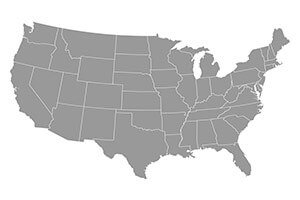
UNITED STATES
February signals the beginning of the pollination season for migratory beekeepers who start the season with the largest crop pollination event in the country—California’s almond crop. An estimated 1.7 million colonies will be needed to pollinate California’s most valuable crop. Early indications are that demand and prices for almond pollination will be similar to or slightly above last season.
Coincidentally, the USDA has released its first ever yearly Cost of Pollination report. This excellent report is available for free at: https://usda.mannlib.cornell.edu/MannUsda/viewDocumentInfo.do?documentID=2008.
Included in the report is a regional breakdown of crops by paid pollinated acres, price per acre for pollination, number of colonies used for the crop’s pollination, price per colony and the total value of pollination for the crop in each U.S. region. One example: Almonds in 2016—971,400 paid pollination acres, $287.0 per acre for pollination, 1.68 million colonies used, $167.00 per colony, with the total value of almond pollination put at $280.56 million.
In another regional summary for AK, ID, OR and WA apples had the highest total value of pollination of crops reported in Region 5 in 2016. The price per colony for apples decreased 2 percent to 51.5 dollars per colony in 2016. The price per acre increased 5 percent to 47.6 dollars per acre. The total value of pollination for apples in Region 5 for 2016 was 5.41 million dollars. The total value of pollination of all crops in Region 5 for 2016 was 14.7 million dollars, up 7 percent from previous year.
Blueberries had the highest total value of pollination of crops reported in Regions 1 and 2 (encompassing much of the eastern half of the U.S.) in 2016.
Beekeepers in the Southeast and Southwest are gearing up for the new season. Colonies were often only listed as in fair condition and lack of soil moisture may put a damper on early wildflower flows in some southern states. Beekeepers have been feeding colonies heavily in some cases, even though early tree pollen and nectar are now available in a number of states. Package bee and queen companies indicate that this will be another very busy season for them judging by the rush of early orders that they have received.
As of this writing, northern beekeepers were indicating a mixed bag of conditions. While the fall season was quite mild in most cases, beekeepers in a number of states said that they were worried about winter stores and potential bee starvation since their late summer and fall flows in a number of states were light to nonexistent. Many beekeepers began early feeding, but in some cases it has been too little and too late. If the winter season turns out to be long and harsh, this could further add to winter colony losses in these northern states.
Holiday retail honey sales were generally listed as good over much of the nation, but larger beekeepers who compete with foreign honey imports are still feeling the pressure of these cheaper imports, although much of the 2016 honey crop has been sold by now.
NORTHEAST
After a rather mild November and December, extreme cold and snow gripped much of the Northeast in late December. The cold weather was not welcome, but the added moisture from the snow should help locations that were on the dry side last season. Beekeepers were still hoping for a mid-winter warm up in January or early February, so that they could check colonies for stores and perhaps feed if necessary. The main concerns come from beekeepers who had poor late honey crops last season and then their colonies went into winter without necessary winter stores. As a result, larger winter losses are expected in this area. Some correspondents were already preparing to order their package bees, nucs and queens to obtain prime shipping dates. Holiday sales of remaining new crop honey were brisk.
MIDEAST
Beekeepers in this area are also extremely worried about a shortage of winter stores. However, they were hoping to have enough winter warm-up periods where they would be able to feed bees to prevent huge winter starvation losses. The fall was unusually warm, which had both good and bad effects on colonies. In some cases beekeepers worried about late heavy brood rearing and too many bees going into winter, while others indicated problems with the warmer weather allowing bees to eat up a lot of their stores. On the other hand, the warmer than normal fall allowed some beekeepers to do more bee work than normal such as feeding and medicating. Reporters also noted that residents in their area were still recovering from wildfires and tornadoes, both of which struck parts of Tennessee. Some parts of this area also remain on the dry side, so correspondents were hoping for good winter rains and/or snows. Honey sales were reported to be good through the month of the December and a number of beekeepers were getting close to being sold out until their next crop comes in.
SOUTHEAST
Colonies were listed as in only fair condition over most of this area. Dry weather was also a major concern because it could impact early spring nectar flows. Meanwhile, many commercial beekeepers had moved most of their colonies to California for the almond pollination season. Many colonies in the Southeast were being fed heavily to …


